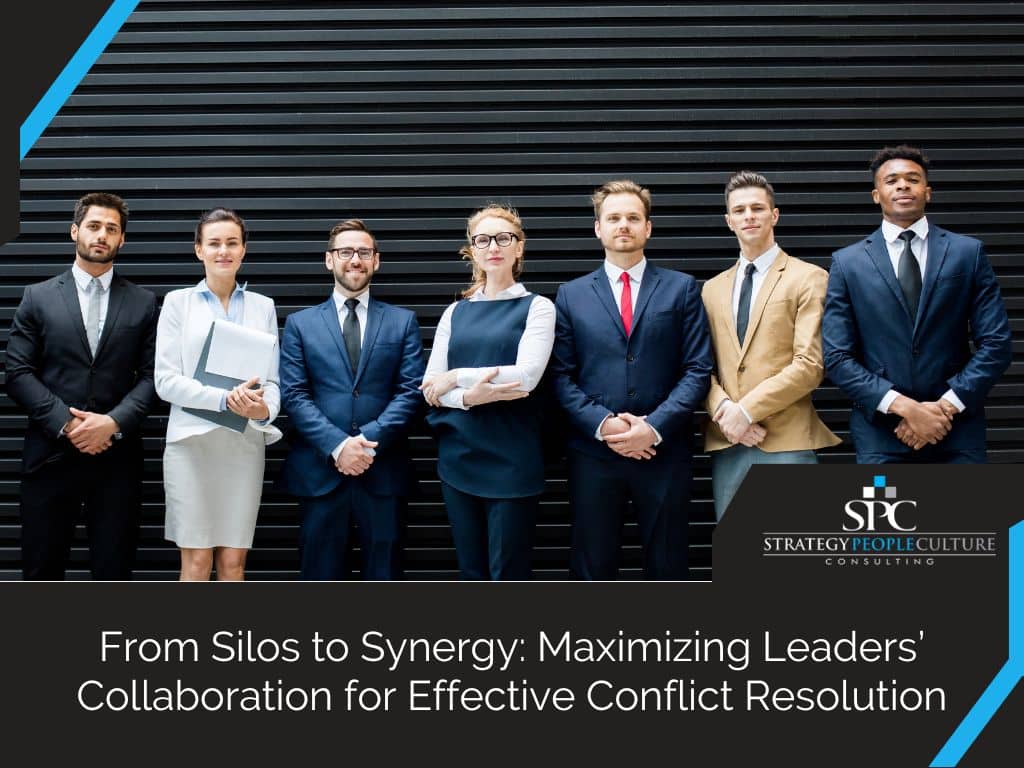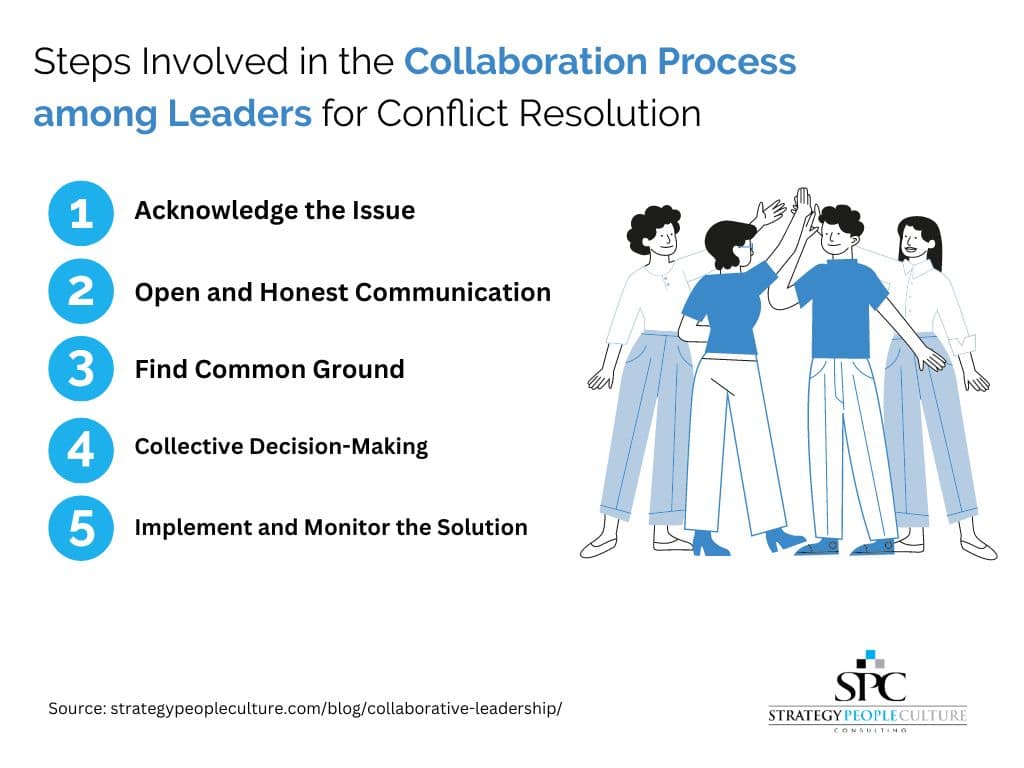From Silos to Synergy: Maximizing Leaders’ Collaboration for Effective Conflict Resolution

In today’s complex and rapidly evolving business environment, leadership roles are no longer about solitary decision-making. They demand effective collaboration, shared visions, and synergistic relationships with other leaders. In this article, we will explore the concept of silos in leadership, why it is often regarded as counterproductive, and discuss why synergy among leaders is the key to success.
The Value of Collaboration among Leaders, Shared Vision, and Leadership Synergy
Collaboration among leaders is an indispensable source of power. Real-world examples abound, demonstrating how collaborative leadership fuels productivity and enables effective conflict resolution. Take the successful turnaround of Starbucks under Howard Schultz, where collaborative efforts from the leadership team played a pivotal role.
Shared vision is another critical element of effective leadership. A unified vision among leaders acts as a potent tool to minimize conflict and propel organizational success. Just look at the accomplishments of Google’s leadership duo, Larry Page and Sergey Brin. Their shared vision led to groundbreaking innovations that transformed our digital world.
Leadership synergy, on the other hand, revolves around leaders working together to achieve more than they could individually. It’s about seeing fellow leaders as partners rather than purely leaders of other departments or job functions. Leadership synergy nurtures collaboration, fuels innovation, and results in even more effective conflict resolution.
Steps Involved in the Collaboration Process among Leaders for Conflict Resolution

Resolving conflicts through effective collaboration involves a multi-step process. Here are the key steps leaders should take:
- Acknowledge the Issue: The first step towards resolution is acknowledging that a conflict exists. This includes recognizing its impact on the team or organization and making a commitment to find a solution together.
- Open and Honest Communication: This step involves all leaders involved in the conflict engaging in open, honest, and respectful dialogue. This dialogue should focus on understanding different perspectives and experiences, not on blaming or criticizing.
- Find Common Ground: Through discussion, leaders should aim to identify shared interests, values, or goals that can serve as a basis for resolution. This common ground can guide decision-making and help maintain focus on the bigger picture.
- Collective Decision-Making: Once common ground is established, leaders should work together to make decisions. This involves leveraging the unique skills, perspectives, and experiences each leader brings to the table to arrive at a solution that is beneficial for all parties involved.
- Implement and Monitor the Solution: After a decision is made, the solution should be implemented effectively, and its impact should be monitored. This allows leaders to assess the effectiveness of their solution and make necessary adjustments over time.
Throughout each of these steps, communication plays a vital role. It fosters trust, understanding, and transparency—key ingredients for successful collaboration. Case studies from companies like IBM and Cisco illustrate how their leaders effectively used this process to resolve conflicts and drive business success.
The Crucial Role of Cross-Leadership Communication

Cross-leadership communication is essential in preventing conflict, ensuring smooth collaboration, and ultimately more efficient operations and engaged employees. Leaders who effectively communicate across different functions and departments promote understanding, boost productivity, and reduce conflicts. The success of Amazon, for instance, is largely attributed to its leadership’s commitment to robust cross-functional communication.
The Influence of Leadership Dynamics on Team Dynamics
Leaders play a significant role in defining team dynamics. Often leaders spend part of their time dealing with cross-functional challenges between their team and others without first focusing on themselves and their counterparts. By fostering collaboration among themselves, leaders set a precedent for their teams. Promoting accountability and ownership within the leadership team can have a ripple effect, encouraging similar behaviors across all levels of the organization and encouraging more proactive communications and avoidance of assumptions.
Creating a safe space for conflict resolution among leaders is also crucial. When leaders openly address conflicts in a constructive and respectful manner, it sets an example for the entire organization.
The Transition from Leadership Silos to Collaboration

Transitioning from siloed leadership to a collaborative approach can greatly enhance business performance. Collaborative leadership fuels innovation, strengthens decision-making, and facilitates efficient conflict resolution—all of which directly contribute to profitability and productivity. Success stories from industry giants like Microsoft and Apple serve as prime examples of seamless transitions from siloed leadership to fruitful collaboration.
Conclusion
In conclusion, effective conflict resolution and organizational success rely on collaboration among leaders, a shared vision, and leadership synergy. By fostering collaborative relationships, leaders can dismantle silos, enhance communication, and exert a positive influence on team dynamics.
How Strategy People Culture Can Help
Creating a collaborative environment by breaking down silos demands deliberate action, unwavering leadership commitment, and the right skill set. This is where Strategy People Culture can step in. Through executive coaching, we empower leaders to identify and overcome barriers that impede effective collaboration. Equipping them with the necessary tools to dismantle silos, we empower their ability to steer organizations toward heightened innovation and productivity.
We invite you to take the first step towards breaking down the silos in your organization. Schedule a consultation with Andrew Botwin today to discuss your specific needs. We’re here to support your journey toward a more collaborative and effective organization. Contact us online or call (833) 762-5772 today.
